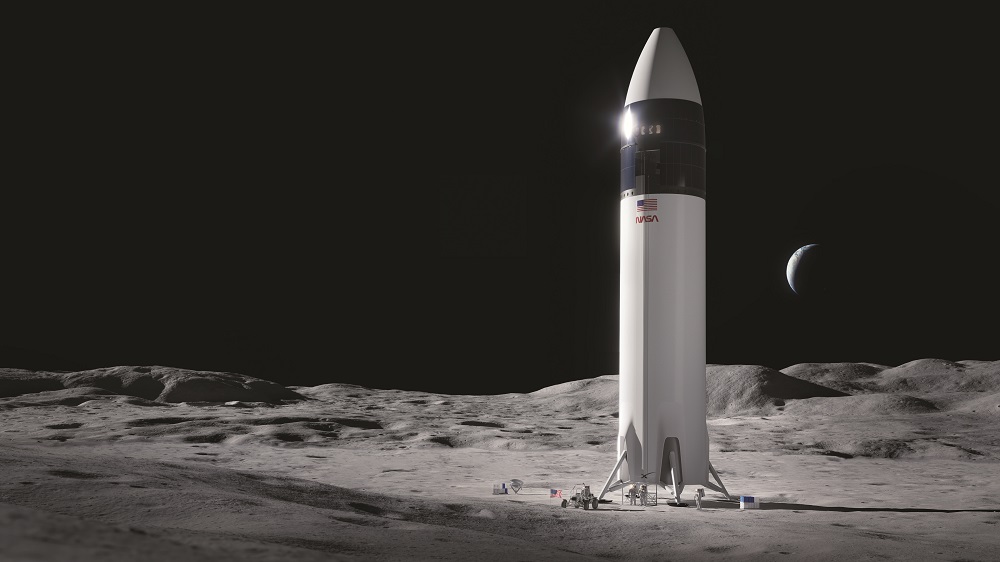WASHINGTON — NASA leadership has formally given up on the goal of returning humans to the moon by 2024, pushing back a landing by NASA astronauts on the lunar surface to at least 2025.
In a Nov. 9 media teleconference, NASA Administrator Bill Nelson said the recently concluded legal challenge mounted by Blue Origin to the agency’s selection of SpaceX for a Human Landing System (HLS) award was a major, but not the only, reason for pushing back the lunar landing goal set by the Trump administration in March 2019.
“Because of the litigation for seven months, we have not been allowed to have, under law, any contact with SpaceX” on the HLS program, he said. He said he talked with SpaceX President Gwynne Shotwell for the first time about HLS on Nov. 5, a day after a federal judge ruled against Blue Origin in its lawsuit against NASA on the program.
The landing on the moon is the key objective of the Artemis 3 mission, which had been scheduled for before the end of 2024. Nelson said that mission was now planned for no earlier than 2025, but added that NASA and SpaceX needed more time to review the state of the program before committing to a more specific schedule for the mission.
The HLS litigation was not the only factor he cited for the delay in return humans to the moon. “Prior to fiscal year ’22, previous Congresses did not appropriate enough dollars for the Human Landing System,” he said. NASA requested $3.3 billion for HLS in its fiscal year 2021 budget proposal, the last by the Trump administration, but Congress provided only $850 million.
The 2024 goal, he added, may not have been achievable in the first place. “The Trump administration’s target of a 2024 human landing was not grounded in technical feasibility,” he said. Earlier this year he had expressed doubts about the 2024 goal given the state of the HLS program as well as delays in development of a new spacesuit that, according to an Office of Inspector General report in August, would not be ready in time for a 2024 landing.
NASA is also delaying Artemis 2, the first Orion flight to carry astronauts. Nelson said at the briefing that the mission, previously scheduled for launch in 2023, had been delayed to as late as May 2024.
Jim Free, NASA associate administrator for exploration systems development, said there were several reasons for the delay. One is impacts caused by the pandemic, including its effects on the workforce as well as on the supply chain for the program. He also cited damage at the Michoud Assembly Building in New Orleans from storms that caused water to get inside and damage hardware.
“Artemis 2 is a complex vehicle,” he said, citing delays adding environmental control and life support system hardware to the spacecraft. “When you add it all up, that’s how it all moved out.”
The cost of developing Orion is going up as well. NASA said at the briefing that it “rebaselined” the program, with a new cost of $9.3 billion from fiscal year 2012 through Artemis 2. The program’s previous cost estimate through Artemis 2 was $6.7 billion.
“There were a lot of requirements changes,” he said, including the addition of a proximity operations, or “proxops” demonstration on Artemis 2 to tests systems needed for the dockings required with the HLS lunar lander on Artemis 3. Pandemic-related costs also factored into the revised budget, he said.
Nelson said NASA remained committed to sending humans to the moon despite these latest delays, and also supported competition for future lunar lander services after Artemis 3. NASA will seek “a significant increase in funding” for that competition, he said, starting with its fiscal year 2023 budget request next year.
As he did at a congressional hearing in May, Nelson warned of China’s growing space capabilities as a threat to land humans on the moon before NASA returns. “The Chinese space program is increasingly capable of landing Chinese taikonauts much earlier than originally expected,” he said. “We are going to be as aggressive as we can be in a safe and technically feasible way to beat our competitors with boots on the moon.”
